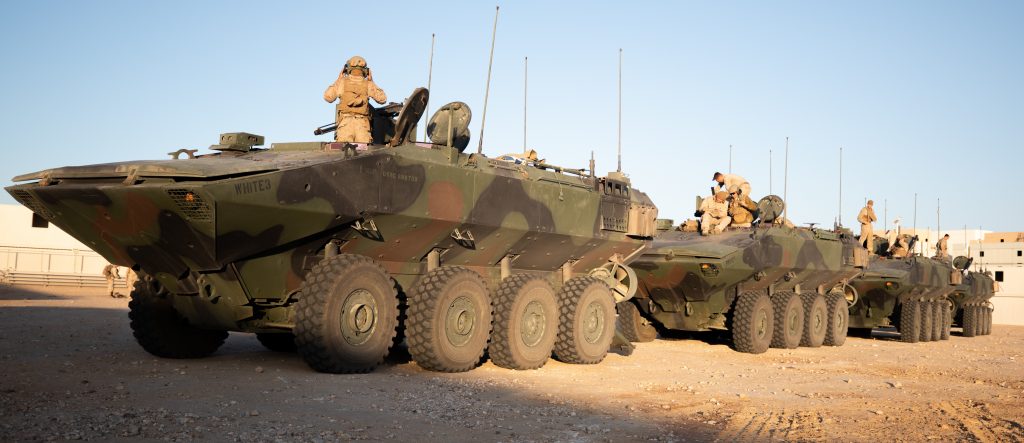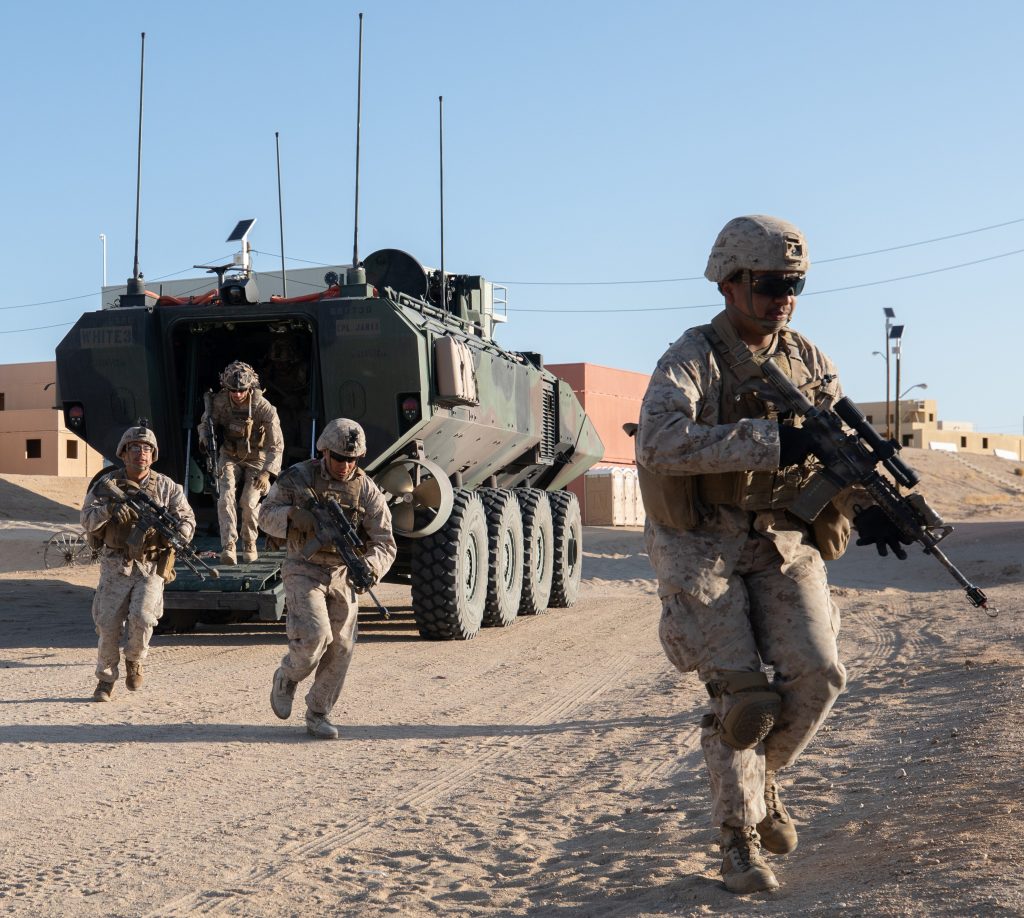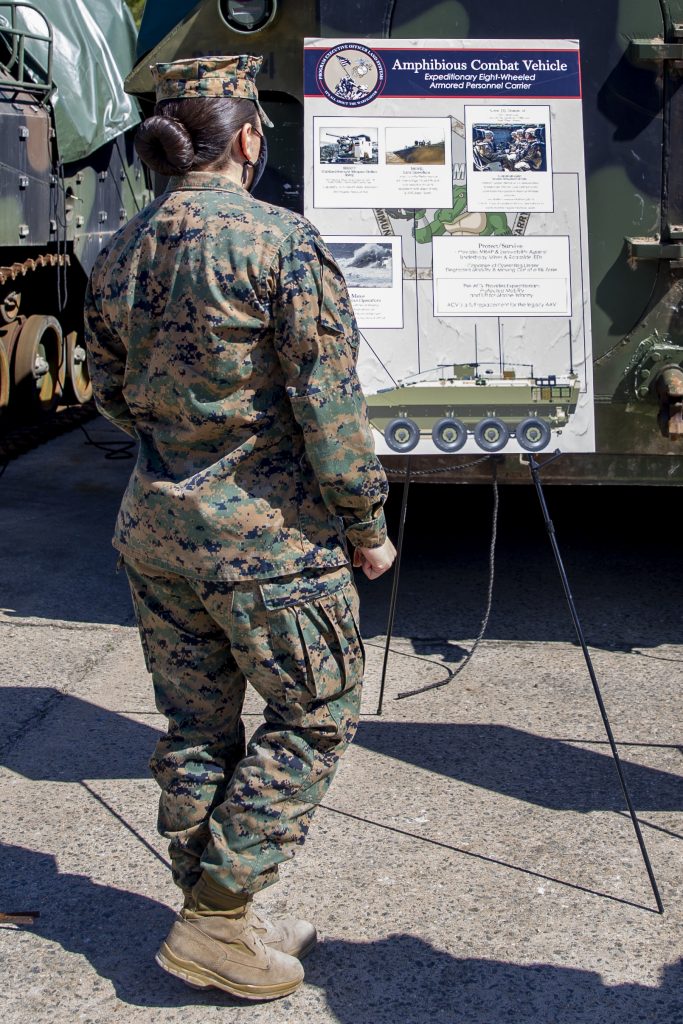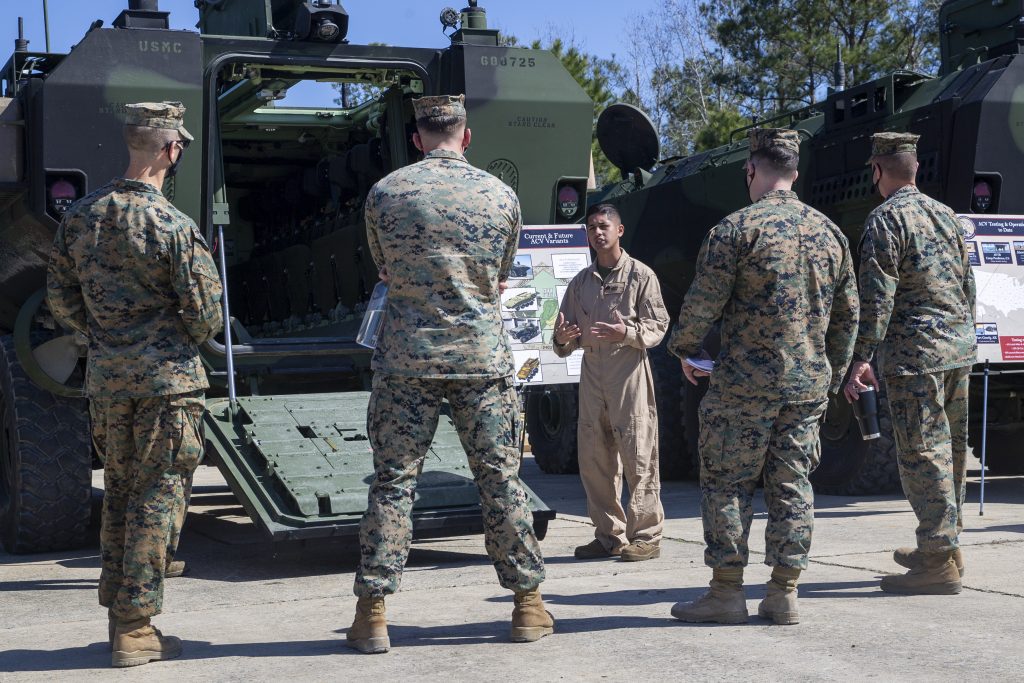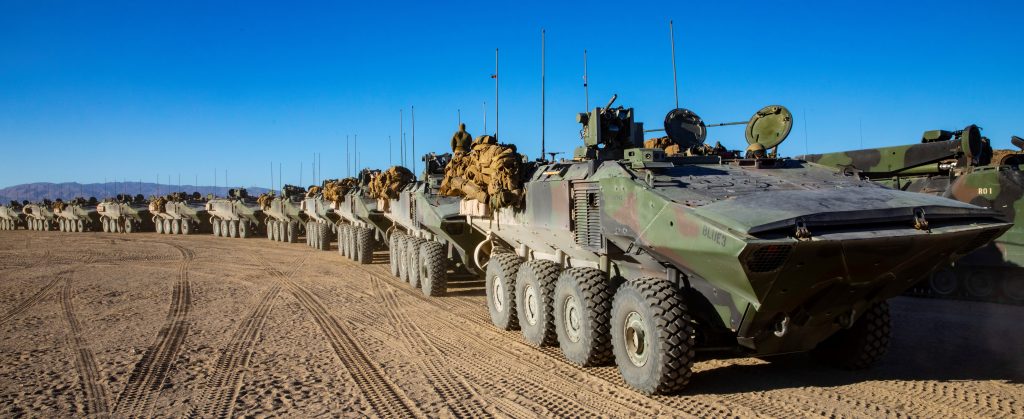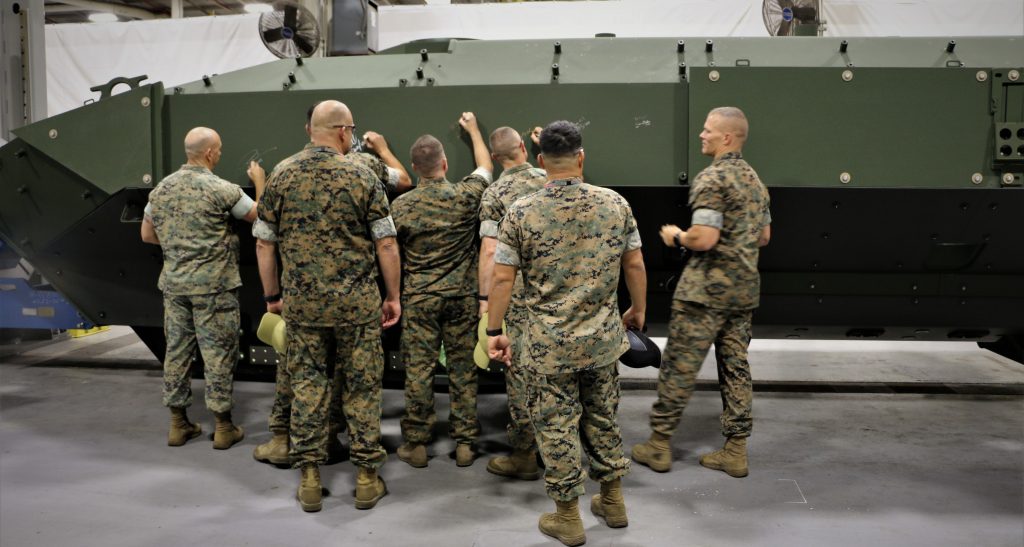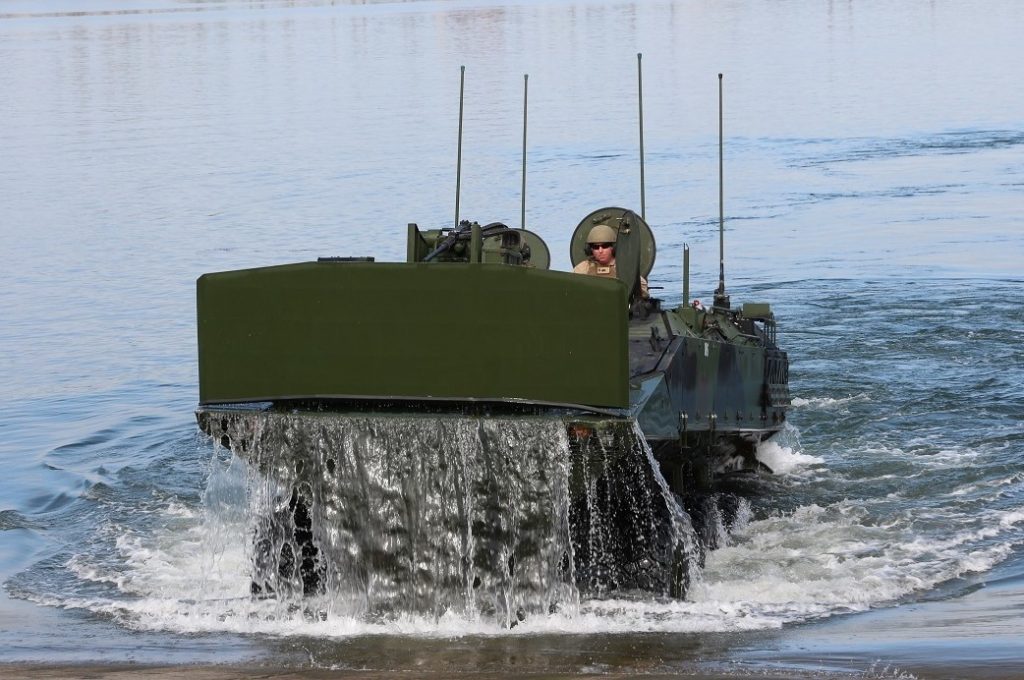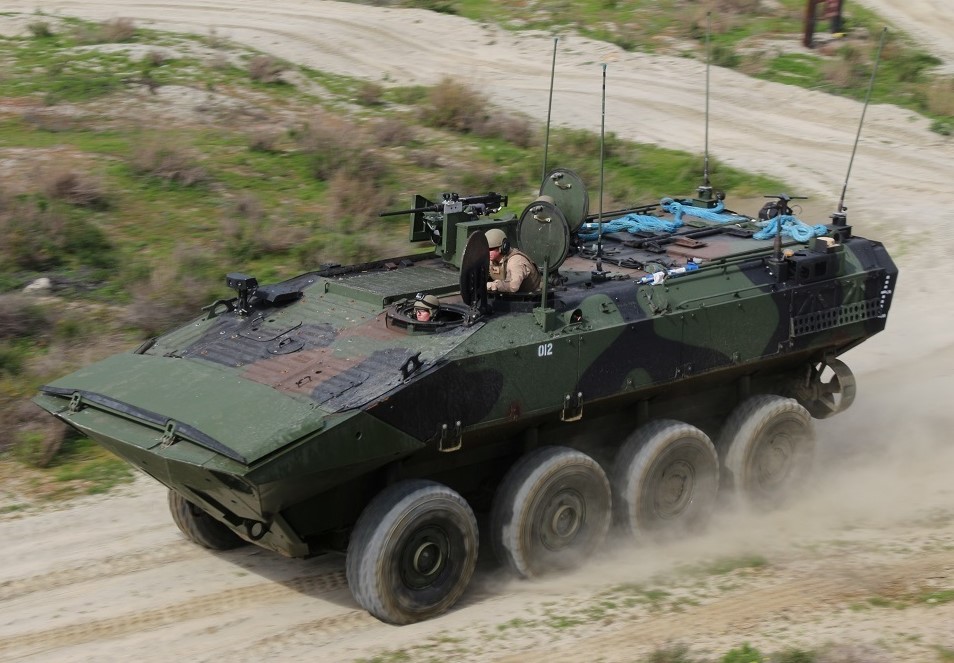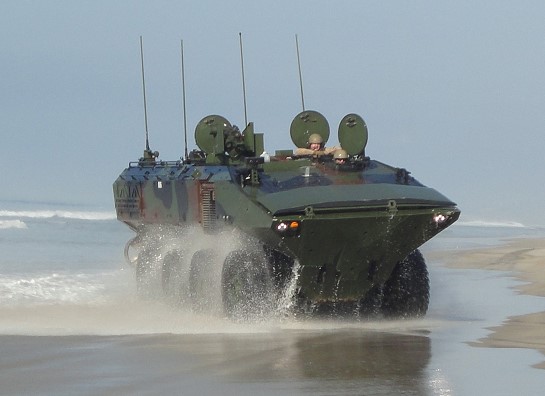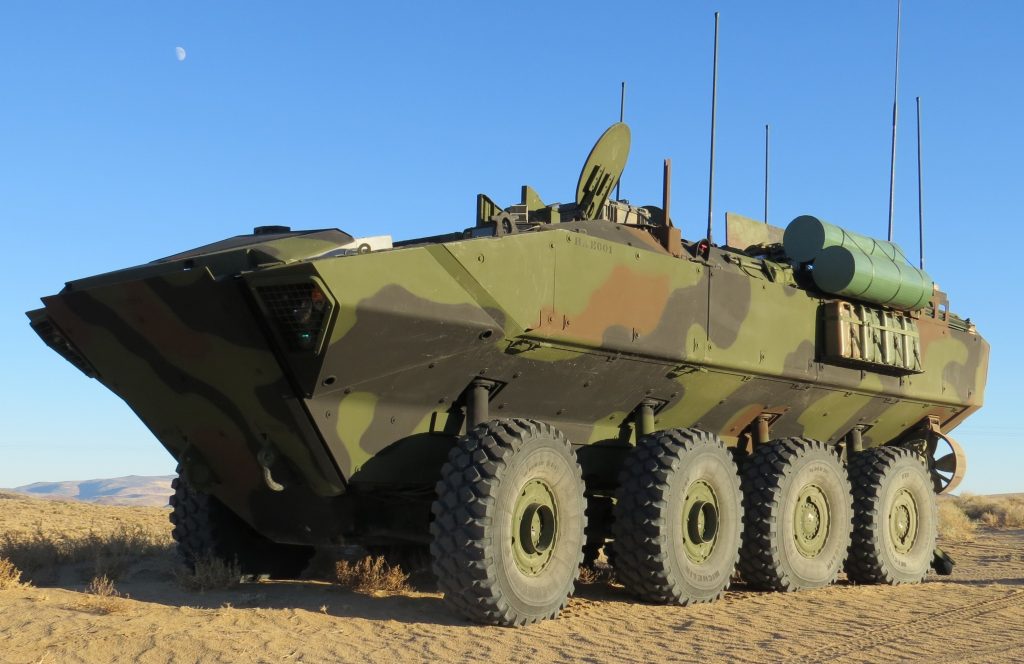13 April 2021-23:59-UTC-07 Tango 06 (25 Farvardin 1400/02 Ramadan 1442/03 Ren-Chen [3rd month] 4719)
07APR2021, Marines ‘ingress’ a new ACV during MOUT (military operations urban terrain) on Twentynine Palms, California.
05APR2021, the MOUT training on Twentynine Palms was apparently the second time a regular Marine unit (not a testing unit, aka NETT unit) employed the ACV in a wargame.
08MAR2021, on Camp Lejeune, North Carolina, the U.S. Marine Corps (USMC) revealed the new replacement for the Amphibious Assault Vehicle (AAV, formerly known as LVTP); the Amphibious Combat Vehicle (ACV).
The new mantra for building support for the ACV is “Newer, Bigger, Better”, even though some former USMC officers have said otherwise about the ‘better’ claim.
In February 2021, BAE Systems claims it delivered the first command version of the ACV. It was also in February 2021, that BAE revealed that the USMC upped its order for BAE made ACVs to the tune of USD$366-million.
The above photo, 20FEB2021, shows the first use of ACVs by a regular Marine unit (3rd Assault Amphibian Battalion), in a wargame on Twentynine Palms, California.
USMC video report from February 2021, by Sergeant Courtney G. White, showing that the ACV was finally being put to the test by regular Marine units at Twentynine Palms, California:
In January 2021, the U.S. Department of Defense’s Director of Operational Test & Evaluation for Fiscal Year 2020 Navy Programs, said there were still numerous problems with the ACV: Things like tire failures in hot/dry climates due to problems with the Central Tire Inflation System, failure to meet mission deadlines, problems recovering broke-down ACVs due to their size and weight, armored seats made “rapid ingress and egress difficult”, Marines report great discomfort having to sit in those same armored seats, “subsystems with a high failure rate included suspension components, hatch and ramp sensors, and switches.”
In October 2020, Italy based Iveco claims to have delivered 18 of their ACVs (aka SuperAV) to the USMC.
A January 2020 USMC video report, by Lance Corporal Anthony Alvarez, in which it’s revealed that ship-to-shore testing has finally been transferred from BAE employees to USMC personnel:
In December 2019, the USMC issued a promo-video claiming the ACV would become operational in 2020:
The ACV has been taking a long time in development (almost a decade), it was originally hoped that the ACV would begin field use between 2020 and 2022. The entire ACV program is mired in controversy, from constant changes in mission requirements, to prototype funding problems, and claims that the decided upon British BAE Systems and Italian Iveco ACVs aren’t any faster than an AAV, doesn’t carry more than the AAV and even costs far more than a new AAV!
December 2019 USMC video, by Lance Corporal Garret Kiger, showing day/night beach ops on Camp Pendleton:
There were two phases of development, and in each phase the USMC paid millions of dollars for each prototype vehicle (as much as $14-million per vehicle in the second phase). Another controversy is the fact that the original ACV concept intended for it to be able to maneuver with Marine Corps M1 Abrams battle tanks, but you all should know what recently happened to them.
The above photo was taken in October 2019, in York, Pennsylvania, showing Marines of the 3rd Assault Amphibian Battalion signing their names to an ACV. The 3rd Assault Amphibian Battalion is the first unit to get the ACV.
An ACV comes ashore on Camp Pendleton, California, February 2019.
An ACV undergoing testing by New Equipment Testing Team (NETT) on Camp Pendleton, February 2019. One of the NETT personnel admitted “…we realized that some of the tactics we’re used to with the AAV don’t work with the ACV.”-Staff Sergeant Kevin Wheeler
The above photo shows an ACV Phase 1.1 development vehicle on a Southern California beach in December 2017.
In November 2016, the USMC paid BAE Systems $198-million for 30 ‘low-rate’ production ACVs. Those low-rate ACVs were supposed to have been delivered by 2017-18.
In 2011, BAE and Iveco joined forces in the ACV competition for U.S. tax dollars. Unfortunately, it is yet another profit making military vehicle for foreign based corporations. Aren’t any new U.S. armored vehicles made by a U.S. company?
Vehicle I-D: The new U.S. Army M109A7 PALADIN, is just ANOTHER ‘TOOL’ OF THE BRITISH EMPIRE!
Vehicle I-D: USMC CH-53K KING STALLION UPDATE
Vehicle I-D: USMC AAV7 VID-FEST
Vehicle I-D: UNDIGNIFIED DEATH OF LVTP-5
Hurricane Harvey: MARINES USE AMPHIBIOUS COMBAT TANKS TO SAVE LIVES!

